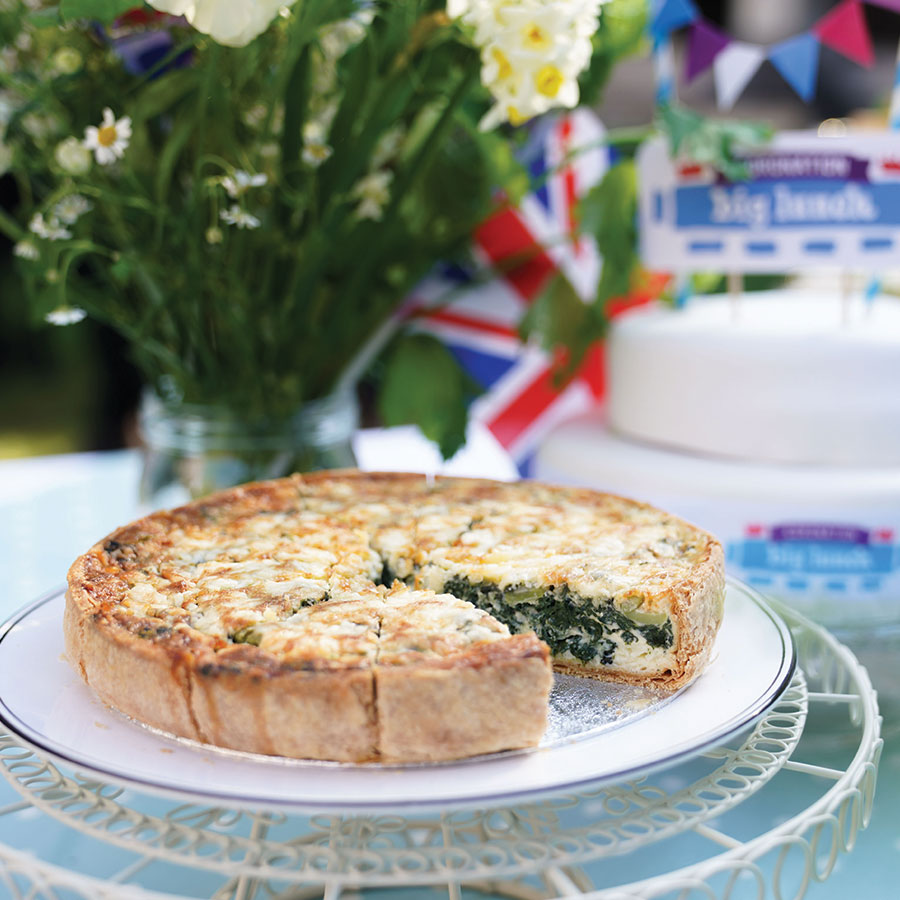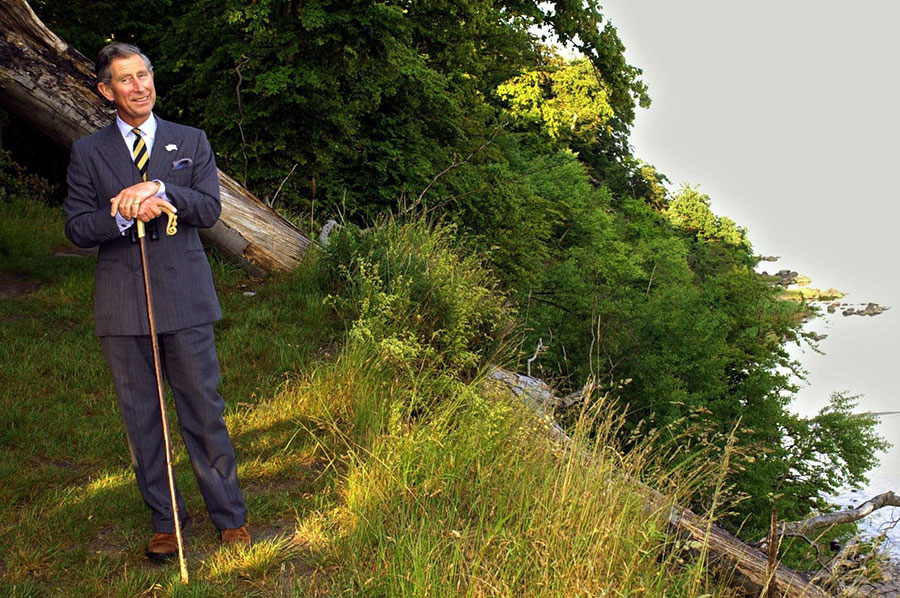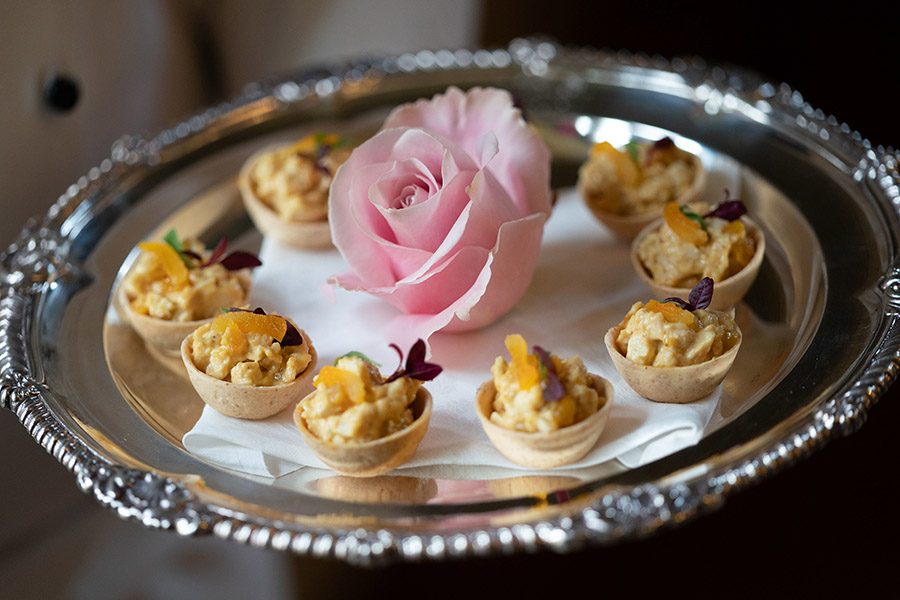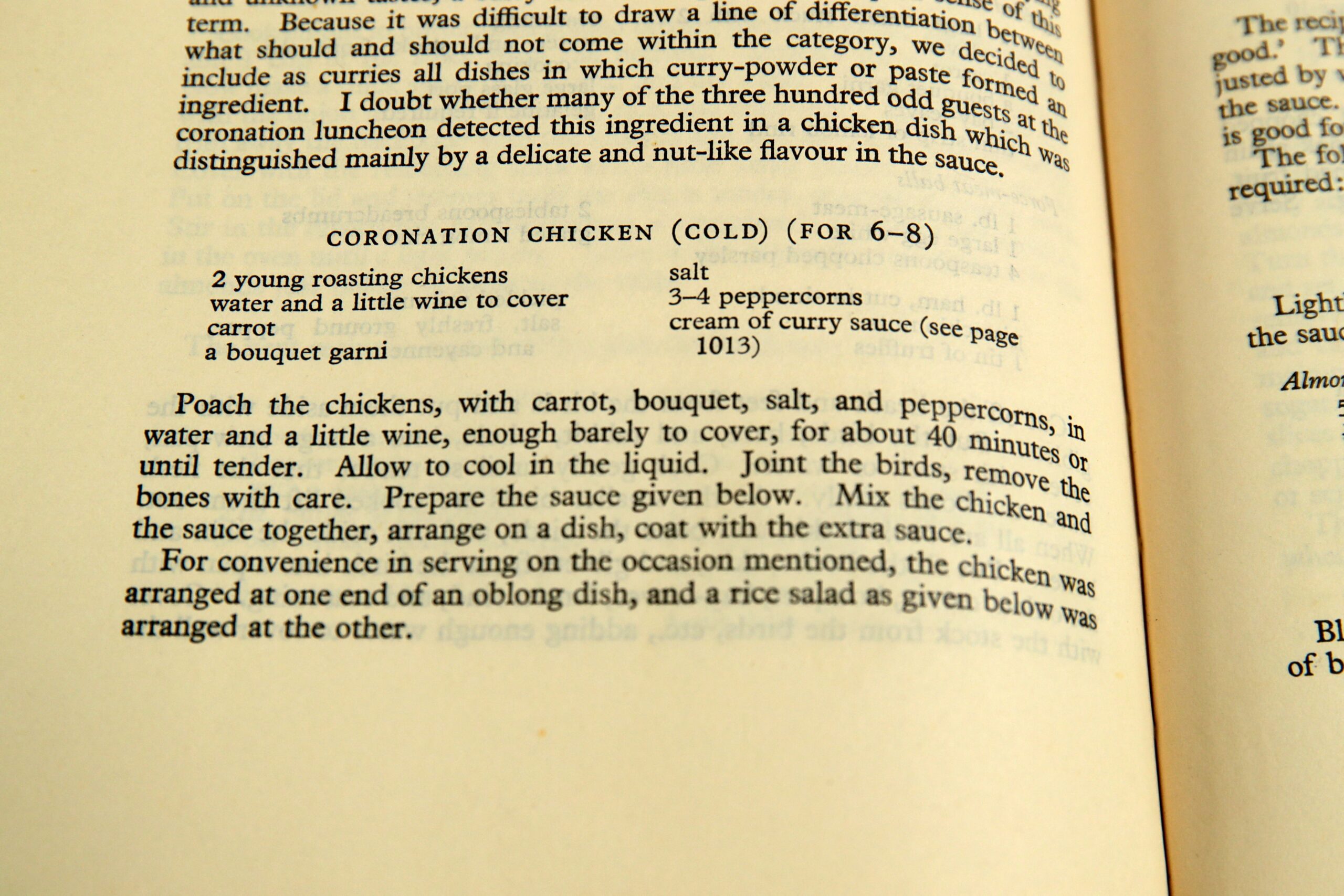Real Kings Eat Quiche: A Deep Dive Into the Deep-Dish Coronation Pie — Plus, the Recipe to Make It Yourself

The official coronation quiche at a Coronation Big Lunch hosted by the Archbishop of Canterbury, at Westminster Abbey, in central London, April 18, 2023. Photo: James Manning/PA Images/Getty Images
Of the many decisions King Charles and Queen Consort Camilla have had to make ahead of their big day in May, the official food of the coronation may have the longest reach. After all, the Coronation Chicken from the 1953 celebration for Queen Elizabeth II has been a British sandwich and salad favourite now for seven decades.
His and Her Majesty’s final choice of quiche was a loaded one. (See recipe below). First of all, there is the question of nationalism. We all know quiche is French, right? Well, guess what? It’s actually German, as are the origins of the British Royal Family. Derived from the German word kuchen, or cake, it first surfaced in medieval times in what was then the kingdom of Lothingren. Today, that is the French region of Lorraine, hence the traditional quiche with eggs, cream, bacon and cheese.
The King’s quiche has no meat, modern that Charles is, and a longtime advocate for vegetables, particularly of the organic sort. It is a simple recipe: cheese, eggs, spinach and broad beans and tarragon. Simple, yes, except for the broad beans part. We call these fava beans, and they are a notably difficult vegetable both to find and to shell. They require shelling twice, once from their giant pod and again, from the secondary, clear shell that coats the tender bean within. It is fiddly and frustrating work to shed that inner pod. Favas are in season in late spring (England would be ahead of us in their growing season), and found only in fancy specialty stores (see Harvest Wagon in Toronto, which makes Whole Foods seem like a bargain), or shops with Mediterranean-heritage clientele. You are not going to find fresh fava beans at Loblaws, is what I’m saying here. I’ve been looking for years, but have never found frozen shelled favas in Canada (if you have a source, please ring me), and the tinned varieties are generally mushy and nasty.
So this is a long way of saying that while the recipe is mostly inexpensive and simple — a smart move as Britons face economic challenges and rising food prices — the inclusion of fava beans makes it out of reach for much of the Commonwealth. It has been suggested to use soy (edamame) beans as a substitute, and that makes a lot of sense, due to their ubiquitous availability. Not quite as locally grown as Charles, the organic vegetable farmer, would prefer but a lot less of a pain to procure and prepare.

The Big Lunch
Quiche is of course a lunch dish, which is the primary requirement of a Coronation menu selection. The Big Lunch is a major initiative around the Coronation (as it was around the Queen’s Platinum Jubilee), a way to encourage the King’s subjects to get together around community tables to celebrate and break bread together. British food writer Felicity Cloake called the dish less original than previous choices, such as the Queen’s Coronation Chicken, and last years’ Jubilee Pudding, but added that broad beans aside, “it’s less likely to be divisive, which is exactly what the country needs right now.”

Coronation Chicken, developed by Le Cordon Bleu to be served at the official luncheon held after the Queen’s 1953 coronation, was not divisive per se, but it was rather exciting for the era. Best described as a mild curry cream sauce, it could be served hot or cold (like Charles’ quiche). On the official menu card for the vaunted occasion, it was called Poulet Reine Elizabeth.
This dish was simplified by Le Cordon Bleu and various contemporary cooks at the time, including Constance Spry, a florist who helped cater the coronation with Le Cordon Bleu, and included a chilled salad and sandwich version in her 1953 cookbook. The recipe is still served today in sandwich shops all over England.

The BBC History Magazine explains that Coronation Chicken may have been a riff on Her Majesty’s father’s Jubilee Chicken, back in 1935. The Spry version uses a combo of mayo and cream and apricot jam jazzed up with curry powder, red wine and tomato purée as the base to baste poached chicken. We aren’t going to go off the rails here discussing the polarizing addition in later years of raisins to the salad; either you are a raisin person or you are not, and I am not, so I’m not going to dwell on that unfortunate turn of events any further.
The thing is, while healthy, simple and veggie forward, the King’s proposed quiche just doesn’t have the panache of Elizabeth’s Coronation Chicken. Curry is a British favourite now, but it was relatively new back then. Curry had been served in the British capital dating back to the early 18th century as a specialty food, but it wasn’t broadly consumed until a boom in popularity first in the 1940s, then again in the ’70s as waves of immigrants spread out across the country. That little dash of curry powder spoke to the tastes of all the Commonwealth countries that have added zest to British cuisine. It still feels much more original and daring.
Sharing food does bring people together. The Big Lunches are a great tradition. But think of how much more conversation it would have sparked had the King and Queen opted for a more memorable dish to commemorate their big day.
Coronation Quiche Recipe
Serves 6
Ingredients:
Pastry
125 g plain flour
Pinch of salt
25 g cold butter, diced
25 g lard
2 tablespoons milk
Or 1 x 250 g block of ready-made shortcrust pastry
Filling
125 ml milk
175 ml double cream
2 medium eggs
1 tablespoon chopped fresh tarragon
Salt and pepper
100 g grated cheddar cheese,
180 g cooked spinach, lightly chopped
60 g cooked broad beans or soya beans
Method:
To make the pastry:
- Sieve the flour and salt into a bowl; add the fats and rub the mixture together using your finger tips until you get a sandy, breadcrumb like texture.
- Add the milk a little at a time and bring the ingredients together into a dough.
- Cover and allow to rest in the fridge for 30 – 45 minutes
- Lightly flour the work surface and roll out the pastry to a circle a little larger than the top of the tin and approximately 5mm thick.
- Line the tin with the pastry, taking care not to have any holes or the mixture could leak. Cover and rest for a further 30 minutes in the fridge.
- Preheat the oven to 190 C. (374 F)
- Line the pastry case with greaseproof paper, add baking beans and bake blind for 15 minutes, before removing the greaseproof paper and baking beans.
- Reduce the oven temperature to 160 C. (320 F)
- Beat together the milk, cream, eggs, herbs and seasoning.
- Scatter 1/2 of the grated cheese in the blind-baked base, top with the chopped spinach and beans and herbs, then pour over the liquid mixture.
- If required gently give the mixture a delicate stir to ensure the filling is evenly dispersed but be careful not to damage the pastry case.
- Sprinkle over the remaining cheese. Place into the oven and bake for 20-25 minutes until set and lightly golden.
For the historical recipe for Coronation Chicken from Constance Spry, go here.
RELATED:
Charles and Camilla Share “Coronation Quiche” Recipe Ahead of Festivities